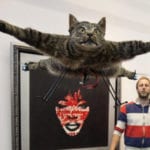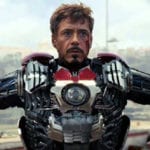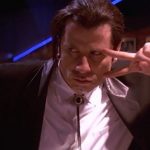 Weird Stuff
Weird Stuff  Weird Stuff
Weird Stuff  Mysteries
Mysteries 10 Tragic Disappearances and Deaths in Joshua Tree National Park
 History
History 10 Ways Childhood Really Sucked in the Old West
 Music
Music 10 Name Origins of Famous Bands from the 1990s
 Religion
Religion 10 Biggest Turnarounds by the Catholic Church
 Weird Stuff
Weird Stuff 10 Unbelievable Times Laws Had Unintended Consequences
 Humans
Humans Ten Historic Women Who Deserve Way More Credit Than They Got
 Movies and TV
Movies and TV 10 Films That Spawned Major Lawsuits
 History
History Ten Times Towns Were Wiped Off the Face of the Earth
 Creepy
Creepy 10 of the Most Disturbingly Haunted Public Houses in the UK
 Weird Stuff
Weird Stuff 10 Niche Subcultures That Are More Popular Than You Might Think
 Mysteries
Mysteries 10 Tragic Disappearances and Deaths in Joshua Tree National Park
 History
History 10 Ways Childhood Really Sucked in the Old West
Who's Behind Listverse?

Jamie Frater
Head Editor
Jamie founded Listverse due to an insatiable desire to share fascinating, obscure, and bizarre facts. He has been a guest speaker on numerous national radio and television stations and is a five time published author.
More About Us Music
Music 10 Name Origins of Famous Bands from the 1990s
 Religion
Religion 10 Biggest Turnarounds by the Catholic Church
 Weird Stuff
Weird Stuff 10 Unbelievable Times Laws Had Unintended Consequences
 Humans
Humans Ten Historic Women Who Deserve Way More Credit Than They Got
 Movies and TV
Movies and TV 10 Films That Spawned Major Lawsuits
 History
History Ten Times Towns Were Wiped Off the Face of the Earth
 Creepy
Creepy 10 of the Most Disturbingly Haunted Public Houses in the UK
10 Unbelievable Movie Scenes Made without CGI
Modern film fans are familiar with extravagant stunts and crazy action scenes. From exploding skyscrapers to flying cars, there is no shortage of eye-boggling moments in blockbuster cinema. Unsurprisingly, and unfortunately, these scenes are mostly created with Computer Generated Imagery, better known as CGI.
However, nothing quite beats practical effects. The human eye is incredibly perceptive and can easily detect when something did not actually happen. So here are ten amazing movie moments that were created entirely using practical effects. They are increasingly rare, but large-scale stunts performed for real can provide the wow factor that makes blockbuster cinema so special.
Related: 10 Early Special Effects That Made Movie Magic
10 The Man with the Golden Gun (1974)
The production team behind James Bond is famous for preferring practical effects where possible. Although there have been some blips in this impressive track record—Pierce Brosnan surfing down a huge CGI wave on a painfully obvious green screen being one example—they have done some remarkable things.
1974’s The Man with the Golden Gun, starring Roger Moore, features one of the most improbable car stunts of all time. A conveniently broken bridge provided the location for this frankly outrageous trick: the corkscrew spin. This required Bond to ramp up one side of the bridge, twist 360 degrees in mid-air, and land safely on the far side. It had been theorized before by a computer simulation, but nobody had ever attempted the real thing.
The production team, using precise mathematical calculations, figured out that the car had to be traveling at exactly 77kpm (48mph). Stunt driver Loren Willert, who performed the trick, was given a $30,000 bonus on the spot, and the press were brought from all around the world to witness it. In 2008, the television show Top Gear unsuccessfully tried to recreate the stunt, which shows just how impressive the original achievement was.[1]
9 The Dark Knight (2008)
It is well known that Christopher Nolan prefers practical effects to CGI, and the film which really kickstarted this trend was The Dark Knight in 2008. There are countless stunts in The Dark Knight which could be listed here, not least the building that they actually blew up. However, in terms of sheer awe, the truck flip is perhaps the most noteworthy. The Joker, wreaking havoc in a freight truck, is thwarted by Batman. How? Batman uses steel cables to flip it upside down.
It would have been much easier for Nolan to ask a team of CGI artists to create this scene digitally. Instead, Nolan wanted the real thing. So the crew set up this stunt in the middle of Chicago, using a carefully placed piston to launch the truck upside down. This procedure was fraught with danger—not least the presence of actual bank vaults beneath the street. Ultimately the stunt was successful, the driver was safe, and audiences were treated to one of the most breath-taking scenes in recent cinematic history.[2]
8 Fitzcarraldo (1982)
Werner Herzog is not a well-known director outside of film schools, but his cinematic achievements are pretty remarkable. Many of his sixty feature films are considered masterpieces, though none of them are quite as ambitious as Fitzcarraldo from 1982.
Fitzcarraldo was inspired by the real story of a Peruvian-Irish rubber baron named Carlos Fitzcarrald, who transported a disassembled steamship over land in the late 1890s. If such a film were made in 2022, no doubt the whole thing would be done with green screens and CGI. But Herzog wanted realism. His film crew went to the Amazon and hauled a 320-ton steamship over a hill. Several crew members were injured, and the wreck of the steamship can still be seen to this day. Production was, understandably, fraught with difficulties and drama, but the film did get made.
Herzog famously quipped after the release of Fitzcarraldo that “every man should pull a boat over a mountain at some point in his life.” Easier said than done, but it made for magnificent viewing.[3]
7 Dunkirk (2017)
Christopher Nolan did not just stop at flipping trucks. His Oscar-nominated 2017 war film Dunkirk, which was widely praised for its immersive qualities, took practical effects to the skies. Dunkirk’s sound editing and set design gave audiences a visceral impression of the Second World War, but what really wowed filmgoers were the scenes of Spitfires dogfighting over the English Channel.
Audiences have become so accustomed to CGI that they assumed these scenes were done using digital trickery. No—they were real. Nolan borrowed Spitfires from the Imperial War Museum and got pilots from the Royal Air Force to fly them. The planes made up to twelve flights per day over the English Channel, simulating combat and flying in formation. Just to make it clear: these were planes that had been built in the 1940s for the actual Second World War. Not only that, but Nolan filmed Dunkirk in the very place where the events of the film had taken place seventy years earlier.[4]
6 Mad Max: Fury Road (2015)
Australian director George Miller has had an interesting career. He burst onto the scene in the 1970s with the cult classic Mad Max and followed it up with two sequels. Afterward, however, Miller surprised everybody by making films about talking pigs (Babe) and dancing penguins (Happy Feet). Back in 2015, he returned to the franchise that made him famous.
Despite being a wacky, post-apocalyptic action film, Mad Max: Fury Road grossed hundreds of millions of dollars and won several Oscars. In one of its most exciting scenes, when our heroes try to escape across the desert in a customized oil truck, an army of goons attempts to stop them. The production team managed to achieve this without resorting to CGI or green screens.
Speeding through the Namibian desert, brave stuntmen actually clambered to the ends of poles attached to moving cars and swung back and forth at high speed, leaping from these poles onto the truck. This required eight weeks of preparation and over 150 stuntmen. Perhaps the fact that such scenes were filmed for real, without CGI, is one reason why Mad Max: Fury Road achieved such surprising success.[5]
5 Apocalypse Now (1979)
Apocalypse Now is famous for its hellish production. A typhoon wrecked the sets, Marlon Brando turned up late, Martin Sheen had a heart attack, and the film ran tens of millions of dollars over budget. Despite these immense difficulties, the film was finished, and Apocalypse Now is regarded as one of the greatest films ever made.
One such difficulty was procuring military equipment: Francis Ford Coppola basically hired an army for his film. He had a mutual contact with the President of the Philippines, Fernando Marcos. He used it to help soothe relations with the government, which was understandably concerned about a regular American citizen hiring out hundreds of pieces of expensive military hardware. The result, though, was spectacular.
When Sheen’s character lands on the beaches of Vietnam (it was filmed in the Philippines but set in Vietnam), he finds himself surrounded by a huge battle. Helicopters and fighter jets are hurtling through the sky, hundreds of soldiers are storming around, the sea is filled with battleships, and entire villages are in flames. None of this was done in post-production. Real soldiers, real helicopters, and real flames.[6]
4 Live and Let Die (1973)
Any list of practical film stunts has to feature James Bond more than once. In Live and Let Die, released in 1973, the film crew accidentally set a Guinness World Record during their attempt to create another remarkable set-piece.
Bond, driving a speedboat, is being hotly pursued by Caribbean drug dealers down a canal in Louisiana. The canal is intersected, however, by a low-lying gravel road. With his odds of escape looking slim, Bond drives his speedboat onto the bank of the gravel road and is thrown into the air. He hurtles through the air, over the road, and lands safely in the canal on the far side.
It should not surprise you to learn that the team behind Bond really did this. But it was not easy, and stunt driver Jerry Comeaux had a very thin margin for failure, as the canal was only fifty feet wide. In his own words, either he made the jump correctly “or else.” Everything went to plan, and Bond fans were given yet another iconic moment to enjoy. It was only realized afterward, however, that this stunt set a World Record for the longest ever speedboat jump, at 110 feet.[7]
3 Harry Potter and the Prisoner of Azkaban (2004)
Fans of Harry Potter will be well acquainted with the brilliant scene in The Prisoner of Azkaban where Harry accidentally inflates his cruel Aunt Marge. Not only does it serve as an excellent moment of comedy—showing the wacky and wonderful possibilities of magic—but it explores the darker side of Harry’s personality.
What might surprise fans is that Pam Ferris, the actor who played Aunt Marge, was actually inflated—sort of. She wore a 23-kilogram (51-pound) costume comprising inflatable rubber, which could be inflated one layer at a time, including layers over her face! Shooting this sequence was a meticulous process involving hidden wires and thirty-eight tweed suits of different sizes. The result, however, is an extraordinary bit of cinema in which audiences can experience the closest thing to somebody actually being inflated. Reflecting on the scene, Pam Ferris recalls that she was four-and-a-half feet wide at her largest and could not eat or walk while wearing the suit.[8]
2 Raiders of the Lost Ark (1981)
Along with Star Wars, Steven Spielberg’s Raiders of the Lost Ark basically invented the modern blockbuster. The film is packed with legendary one-liners, thrilling action scenes, and unforgettable music. But one scene, in particular, has come to define the spirit not only of Indiana Jones but also of adventure films as a genre: the boulder chase. It lasts only a few seconds and takes place right at the beginning of the film. However, few movie moments are so instantly recognizable.
How did they do it? The film crew built a 168-kilogram, 3.6-meter (300-pound, 12-foot) fiberglass boulder. And Harrison Ford had to run away from it down a 36.5-meter (40-yard) track not just once but ten times. Spielberg realized that a stunt double would not be believable enough and somehow convinced the Hollywood star to risk serious injury for the sake of the shot. His decision to recreate a real-life boulder chase rather than resorting to camera trickery or green screen (it was around even then!) is a testament to the power of practical effects. It should also serve as a lesson to modern filmmakers.[9]
1 Tenet (2020)
Christopher Nolan’s preference for practical effects took on new heights in his most recent film, the controversial and confusing Tenet. It was the first major release after the global outbreak of Covid-19, and many hoped Tenet would be the film to get people back in cinemas.
Well, even if Tenet was met with mixed reviews, nobody could fault its spectacle. Taking center stage among a host of bizarre and incredible sequences is the Oslo airport plane crash. As filmgoers, we are familiar with explosions and disasters involving airplanes. But these are almost always created with CGI. Not Tenet. Christopher Nolan actually bought a retired Boeing 747, crashed it into a building, and filmed the whole thing for our entertainment.
Tenet’s visual effects supervisor, Andrew Jackson, revealed that “all of the flames, all the collapsing” were real events. What is most amazing is that, according to Jackson, Nolan and his team realized it would actually be cheaper to perform this stunt for real than to create it with CGI.[10]



![Top 10 Most Important Nude Scenes in Movie History [Videos] Top 10 Most Important Nude Scenes in Movie History [Videos]](https://listverse.com/wp-content/uploads/2019/09/sharonstone-150x150.jpg)




